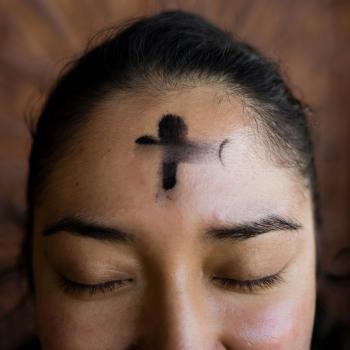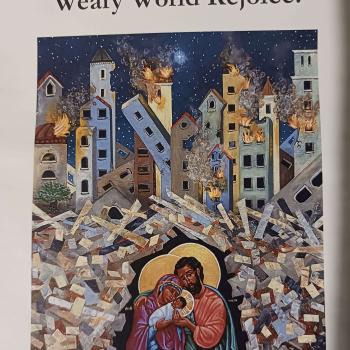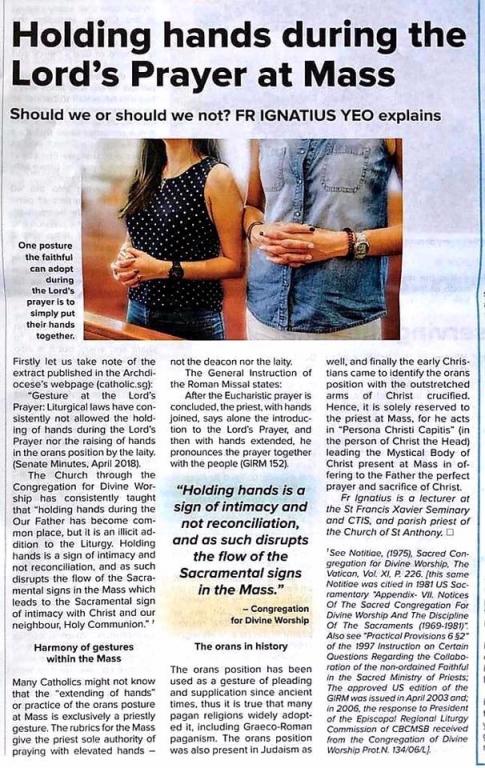Since the announcement of Summorum Pontificum, there have been many bishops issuing statements and analysis of those statements. Upon reflection we can see quite clearly the issues in this country surrounding ecclesiology.
The first difficulty encountered is the interpretation of the requirement that a priest have some level of proficiency before offering the TLM. (Everyone understands what I mean when I say TLM, so that is the term I will use.) In some parts this requirement appears to be interpreted as a faculty granted by the bishop. In other parts of the country this requirement seems to be more informal, certification by a select group of presbyters or confirmation that a training session was completed through FSSP, ICKSP, or some other group. This is an area that I think has received the most unwarranted criticism. It is obvious that offering the TLM doesn’t require a special faculty. The certification requirements, as long as they retain common sense, should handle certifying priests quickly. Lacking this, this is the one area where action by Ecclesia Dei would be easiest. This is also an area in regards to private masses where any Canonical invocation against a priest would probably blow up if the cause was attempted on the basis of some diocesan regulation alone. In my opinion, the requirement of competence in saying the TLM is a positive obligation of the presenter and not a faculty.
More interesting to me has been how bishops have dealt with the pastor and parishioner. Some bishops have taken the straight forward approach and have made clear that pastors are responsible for parishioners and where needs cannot be met at the parish level, those seeking the sacraments under the extraordinary rite should be referred to the diocese. This also happens to coincide with Summorum Pontificum. Implicit in much of the analysis of Summorum Pontificum has been the belief that sacraments could and would be widely available in the extraordinary rite at the parish level. I will reiterate my belief here that by far the majority of people who attend the TLM will do so at a personal parish – a parish with diocese-wide jurisdiction for those desiring the TLM. Other bishops have taken to collecting information to know which parishes in their dioceses will be offering the TLM so that specific parishioners can be referred to those parishes. This is an approach that has received praise in some quarters, but an approach I find troublesome. On an individual basis, I can to a degree understand parish shopping. For example, if a man and his extended family always have attended Parish X and he moves 5 miles outside Parish X, I think it would be perfectly reasonable for him to be allowed to join Parish X. I think it is another thing entirely to institutionalize disrespect of ecclesial boundaries. It is not my desire to deny a man of parish Y from attending Parish X. It wouldn’t offend me in the least if the Pastor of Parish Y referred the man to Parish X. I tend to prefer protocol being followed. Even if we are to end up at the same end, the man attending Parish X, my preference would be that this would not be a diocesan policy.
The final area that I will address in this post has been the minor uproar over many bishops claiming that 50 persons (or some other number) are required before there is the stable community. Watching debate over this has been particularly frustrating for me. I live in an area where fewer than 150 people or so attending a mass is a pretty good indication of a church getting ready to close. In many cases I think the number attached by a bishop was more for public consumption than it was for the pastors themselves. I also live in a county where there is one Spanish language mass available. I can tell you that there are more than 50 Hispanics in my county. I don’t bring this up to try and claim for every Latin mass there needs to be one Spanish mass. That isn’t my interest. I bring this up because people have been interpreting Summorum Pontificum in a vacuum. Just because a man is a doctor and can only attend mass between 3 PM and midnight on Sunday doesn’t mean that his pastor has to offer a mass between 3 and midnight. Put simply, if you live in an area lacking an SSPX chapel but having storefront Pentecostal and Evangelical churches (or iglesias) popping up on every corner, don’t sit there shocked and dumbfounded when you are referred to an indult community or the diocese when petitioning for a TLM. There is no malicious intent unless you think God is being malicious by constraining time and resources. If on the other there is an SSPX chapel in your neighborhood and 5 or 10 families commute a long distance to an indult so as to remain in the church, your argument that pastoral need exists will be much stronger. If you are in an area where priests are on street corners with signs saying, “Seeking Mass Attendees”, you should have no problem at all. And this will be my final point on the matter. Don’t be afraid to hire a priest to offer the TLM and then seek the pastor’s permission to have him offer mass. Asking a pastor to allow you to bring in a priest to use the church for a non-profane use (offering the TLM) is a completely different question than asking the pastor to schedule a mass to be presided by either himself or someone he can find etc. Depending on which question you ask will be heavily influential in the answer you receive in regards to how many people are required.












